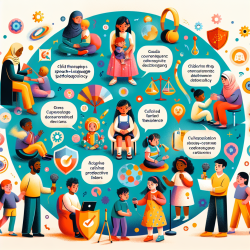Introduction
Disasters have profound impacts on communities, often leaving long-lasting mental health challenges in their wake. The Case Study of Resilient Baton Rouge: Applying Depression Collaborative Care and Community Planning to Disaster Recovery offers valuable insights into how practitioners can improve their skills and approaches in disaster recovery scenarios. This blog explores key outcomes from the study and encourages further research and implementation of these strategies.
Understanding Resilient Baton Rouge
The Resilient Baton Rouge initiative was launched in response to the 2016 Great Flood in Baton Rouge, Louisiana. It aimed to build local capacity for mental health services by implementing an expanded model of depression collaborative care. This approach was coupled with identifying and responding to local priorities and assets for recovery.
The initiative focused on enhancing community resilience, which involves the capacity of communities to withstand and recover from significant adversities, such as natural disasters. This was achieved through:
- Expanding local behavioral health service delivery capacity through subgrants to agencies.
- Providing tailored training to licensed and non-licensed providers.
- Developing advisory councils and partnerships with grassroots and government agencies.
- Fostering national collaboration around post-disaster resilience.
Key Outcomes and Applications
Practitioners can draw several lessons from the Resilient Baton Rouge initiative to improve their skills and approaches:
1. Collaborative Care Model
The collaborative care model, which integrates mental health care into primary care settings, was a cornerstone of the initiative. Practitioners should consider adopting this model to enhance access to mental health services, particularly in post-disaster contexts.
2. Community Engagement
Engaging community members and stakeholders in participatory planning and development is crucial for building social capital and enhancing resilience. Practitioners should prioritize community involvement in designing and implementing mental health interventions.
3. Training and Capacity Building
Tailored training programs for both licensed and non-licensed providers were essential in building local capacity. Practitioners should seek opportunities for continuous learning and training to stay updated on evidence-based practices and enhance their skills.
4. Partnerships and Collaboration
Building partnerships with grassroots organizations, government agencies, and other stakeholders can strengthen resilience efforts. Practitioners should actively seek collaborations to share resources and best practices.
Encouraging Further Research
The Resilient Baton Rouge case study highlights the importance of ongoing research and evaluation in disaster recovery efforts. Practitioners are encouraged to conduct further research to explore the effectiveness of different models and strategies in various contexts. This can lead to the development of more tailored and effective interventions for communities affected by disasters.
Conclusion
The Resilient Baton Rouge initiative provides a valuable framework for enhancing practitioner skills in disaster recovery scenarios. By adopting collaborative care models, engaging communities, building capacity, and fostering partnerships, practitioners can significantly improve mental health outcomes in post-disaster contexts. For those interested in delving deeper into the research, the original paper offers comprehensive insights and methodologies.
To read the original research paper, please follow this link: Case Study of Resilient Baton Rouge: Applying Depression Collaborative Care and Community Planning to Disaster Recovery.










